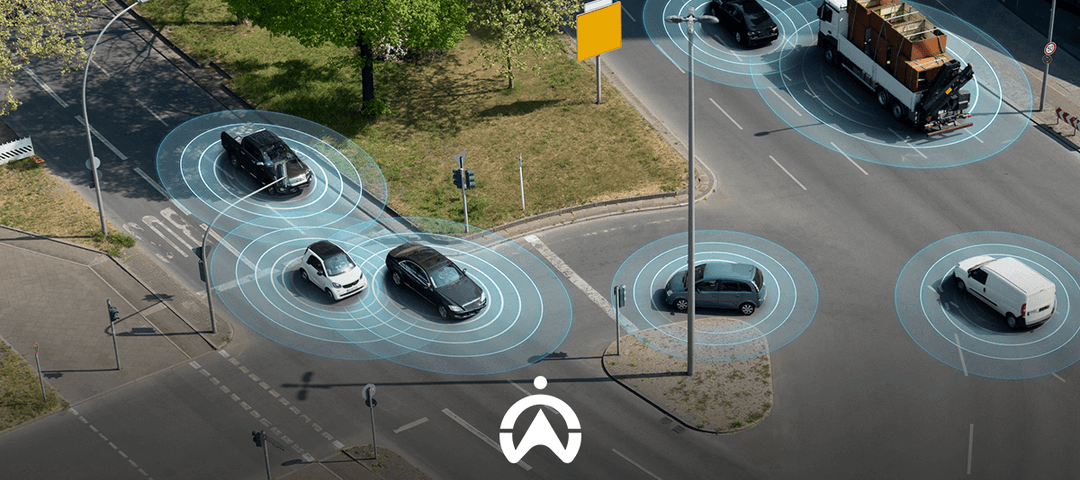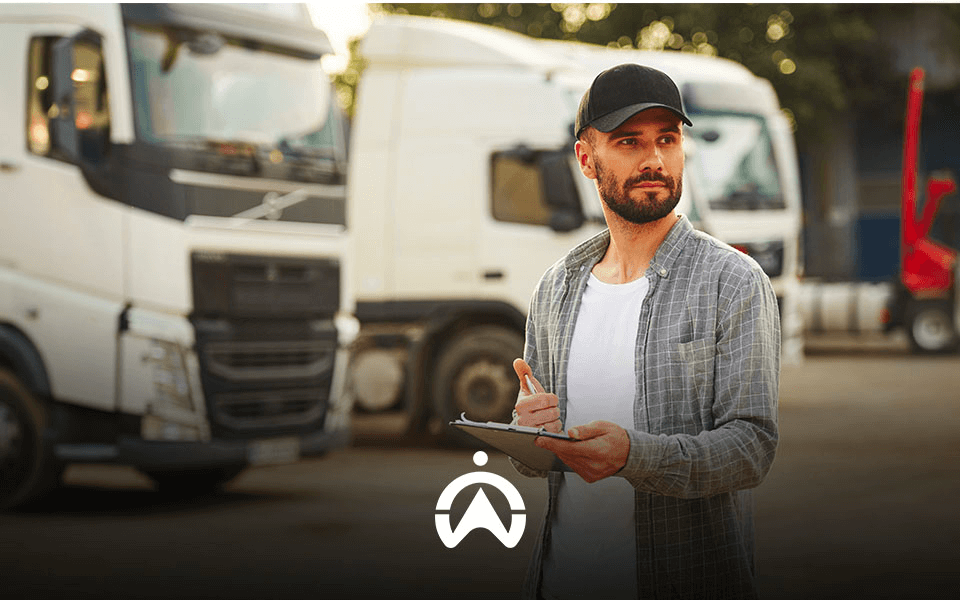Which Different Smart Technologies Are Currently Used in Transport?
Is your transportation business as tech-savvy as it could be?
In a world of technological advancements for fleets, adapting is what sets you and your business apart.
Ready to stand out from the crowd? Read on to find out how smart technology is the solution and how Cartrack brings it straight to your fleet.
What is smart technology?
In simple terms, smart technology, often known as “smart tech,” is a collection of innovative gadgets powered by computers. Think of it as giving everyday objects a brain and internet access. These gadgets, which have revolutionised multiple parts of our lives, are equipped with sensors, software, and internet connectivity, making them smarter. These sensors can measure things like vehicle speeds, fuel levels, and geographical locations.
Examples of smart technology
Smart technology is an umbrella term for the different technologies that can be used to elevate your transport business’s functioning. Here’s how:
- Artificial intelligence
Artificial intelligence (AI) refers to the ability of computers to mimic intelligent human behaviours such as learning, problem-solving, and decision-making. This transformative technology plays a crucial role in achieving smart transportation functions by leveraging advanced technologies that increase passenger safety, reduce traffic congestion, and minimise accidents.Here’s how AI is revolutionising transportation:
– Powering autonomous vehicles: AI enables autonomous vehicles to function, using sensor data to navigate, identify obstacles, and make important decisions in real-time, such as which routes to take and how to navigate traffic. This ensures that they function safely and smoothly.
– Simplifying traffic management: With its ability to analyse data from cameras and sensors, AI can optimise traffic management by providing alternative, deviation-free routes according to real-time conditions.
– Logistics optimisation: Similar to how AI provides alternative routes to help avoid traffic, it does the same for delivery services, ensuring deliveries are timely, efficient, and cost-saving.
- Machine Learning
Machine learning (ML) is a subfield of AI that allows computer systems to learn and improve without any explicit instructions by using algorithms trained on data sets. This allows the creation of self-learning models that can predict outcomes, classify information, and keep on learning without human intervention.Here’s how machine learning is revolutionising transportation:
– Predictive maintenance: ML algorithms can use sensor data from vehicles (such as engine performance, oil pressure, etc.) to predict potential issues before they become costly and lead to costly, unplanned downtime.
– Aiding route optimisation: ML can analyse traffic data, predict congestion hotspots, and suggest alternative routes. This data is then fed into navigation apps, allowing drivers to avoid congested road conditions and complete timely deliveries.
- IoT
The Internet of Things (IoT) is an extensive network of interconnected physical objects that are embedded with sensors, software, processors, and network connectivity. These sensors gather a wide range of data about their environment and the object’s status, including its movements and live location. A centralised system then analyses this data, and through this analysis, the raw data can be turned into actionable insights that enable informed decision-making.Here’s how IoT is revolutionising transportation:
– Fleet tracking: IoT sensors work to monitor vehicle location, fuel consumption, and speed in real-time, giving fleet managers unmatched visibility to optimise routes, reduce fuel costs, and ensure driver safety.
– Preventative maintenance: IoT sensors constantly monitor the health of vehicles and their various components, which helps fleet managers identify potential wear and tear on vehicle components before they fail. This prevents breakdowns, and unplanned downtime and extends vehicle longevity.
– Supply chain optimisation: IoT devices can track cargo location and temperature, which helps ensure integrity and lower the chances of spoilage, having a significant impact on supply chain efficiency and customer service.
- AR vs VR
AR and VR refer to two distinct but related technologies. Augmented reality (AR) blends reality and digital, letting you see the real world with digital information and images layered on top. In contrast, virtual reality (VR) is a computer-generated simulation of a 3D environment that users can interact with virtually. By combining sensor technology and advanced software, these solutions can create interactive experiences.AR software analyses the data recorded by sensors. VR, on the other hand, creates a completely immersive, simulated digital environment that replaces the user’s real-world surroundings. Both AR and VR are prime examples of smart technology because they combine sensor technology, advanced software, and sophisticated displays to create intelligent and interactive experiences.
Here is how AR and VR are revolutionising transportation:
– Driver training: AR can provide a safe, controlled environment to help train drivers and ensure that they’re able to make informed decisions behind the wheel.
– Remote collaboration (AR and VR): AR and VR can enable remote experts to view and interact with the work environment of on-site technicians in real time. This facilitates effective troubleshooting, support, and knowledge transfer.
– Enhanced navigation: AR-powered systems can project directions and information directly onto the driver’s field of view (e.g., windshield or AR glasses). This allows for safer, more intuitive navigation without requiring the driver to look away from the road.
- ADAS
Advanced Driver-Assistance Systems (ADAS) are a suite of technologies that utilise sensors, cameras, machine learning, and artificial intelligence to enhance safety and improve the driving experience. ADAS represents a significant leap forward in the transportation industry.Here’s how ADAS is revolutionising transportation:
– Increased safety: A core function of ADAS is to mitigate human error, the leading cause of traffic accidents. By providing real-time situational awareness, ADAS significantly reduces collision risks.
– Enhanced driver experience: ADAS takes the stress out of driving by automating routine tasks like lane centring and blind-spot monitoring, allowing drivers to focus on the road while feeling more confident and in control.
- Smart infrastructure
Smart infrastructure is a network of intelligent technologies embedded in roads, bridges, and traffic systems that make use of sensors and data analytics to revolutionise the way we travel. While South Africa is still in the early stages of implementing smart infrastructure, the potential benefits for transportation are undeniable.Here’s how smart infrastructure is revolutionising transportation:
– Traffic flow optimisation: By smoothing traffic flow, smart infrastructure reduces stop-and-go traffic, which leads to lower fuel emissions and decreased fuel consumption.
– Data-driven decision: By painting a clear picture of traffic patterns and infrastructure usage, managers can make informed routing decisions.
- Big data and analytics
Big data refers to the large and complex datasets generated by various sources within the transportation network. When analysed effectively, big data provides valuable insights that are revolutionising the way we travel:Here’s how big data and analytics are revolutionising transportation:
– Optimised operations: Big data helps managers analyse historical and real-time information such as traffic patterns, weather conditions, and delivery locations to optimise delivery routes, which helps ensure on-time deliveries, saving time and money.
– Predictive maintenance: Big data helps managers monitor and predict potential maintenance issues before they occur, helping prevent breakdowns, reduce unplanned downtime, and extend vehicle lifespan.

What are the benefits of smart technology?
From safer roads and efficient operations to a more sustainable future, smart technology is revolutionising transportation through a wide range of benefits. These include:
- Enhanced fleet and cargo safety:
Smart technology directly contributes to safer roads and improved transportation overall. From using advanced sensors that prevent potential accidents to smart traffic management systems that ease congestion, these technologies work together to create a safer environment for everyone involved in transportation.
- Increased efficiency:
Smart technology makes the entire transportation sector significantly more efficient. It helps vehicles find the quickest, most fuel-efficient routes, predicts maintenance needs to prevent downtime, and allows shipping ports and logistics centres to operate smoothly through connected systems.
- Improved sustainability:
Smart transportation solutions often go hand-in-hand with increased sustainability. Optimised routes and traffic flow lead to reduced fuel consumption and emissions. Predictive maintenance helps to extend the lifespan of vehicles and equipment, reducing waste and excessive emissions.
- Enhanced user experience:
Smart technology offers a better, more personalised experience for everyone using the transportation system. Real-time traffic updates and route suggestions help computers avoid delays, while smart ticketing and payment systems make the journey smoother.
- Economic benefit: Smart technology doesn’t just improve efficiency, safety, and sustainability – it boosts the bottom line for transportation businesses. Optimised routes, reduced fuel use, minimised wear and tear, and streamlined maintenance make operations more cost-effective.
Smart technology sounds like the epitome of technological advancement, but what does it mean for your transport business? Let’s find out.
What role does smart technology play in the transport industry?
Let’s explore these examples based on the transport sectors: public, private, logistics, and freight:
- Public transport smart technology:
Public transport offers shared mobility services for the general public, which operate on fixed routes and schedules. Common types of this include buses, taxis, and trains.Here’s how smart technology is playing a role in this transport sector:
– Real-time tracking and scheduling: Buses and trains are now equipped with GPS tracking, and when paired with mobile apps, passengers can view accurate arrival times, delays, and the current location of the vehicle. This takes the guesswork out of waiting, which reduces stress for commuters.
– Integrated Public Transport Networks (IPTNs): IPTNs use real-time data and GPS tracking to synchronise the various modes of public transport, allowing for improved route planning and on-time arrivals for commuters.
- Private transport smart technology:
Private transport works with vehicles owned and operated by individuals for personal use. Offering the most flexibility and control, here’s how smart technology plays a role in this sector:– Vehicle telematics: Telematics equips vehicles with real-time tracking and route optimisation, improving the transportation process for both the commuter and service provider. This can also come in handy for getting personalised insurance premium offers, which are usually based on driver behaviour.
– Electric and hybrid vehicles: South Africa is seeing a rise in electric and hybrid cars, and with the growing number of charging stations in major cities, the private transport industry is sure to become greener and more sustainable.
– E-hailing platforms: E-hailing apps such as Uber and Bolt make use of intelligent algorithms to match drivers with passengers, calculate optimal routes, and provide cost estimates.
- Logistics and freight solutions:
This sector focuses on the movement of goods and commercial cargo, involving a complex network of vehicles, ships, and warehouses.Here’s how smart technology plays a role in the backbone of supply chains:
– Automated warehouse systems: The logistics industry uses automated systems to ensure accurate inventory management, automate parcel sorting, and enhance efficiency.
– Fleet management systems: These systems are equipped with a wide range of technology that helps companies gain unparalleled access and insight into their fleet, ranging from fuel consumption for efficiency to route planning for timely deliveries.
Integrating smart technologies in the transport sector indicates that the country is moving towards more efficient, sustainable, and user-friendly systems. Even though we’re making significant strides in many areas, there are still areas for improvement, and one way these changes can be fostered is by implementing a fleet management solution.
What is fleet management?
Fleet management is the optimisation of a fleet’s functioning, ranging from tracking vehicles and monitoring driver behaviour to planning efficient routes and scheduling vehicle maintenance. Its purpose is to ensure that a fleet functions smoothly at a lower cost and keeps customers happy.
What are the benefits of fleet management for the transport industry?
Fleet management is crucial to the success of the transport industry. Let’s explore a few of its benefits:
- Cost reduction:
Fleet management systems help you optimise fuel consumption by monitoring inefficient driving habits, enabling route planning for maximum efficiency, and preventing costly breakdowns with preventative maintenance. Companies can potentially secure lower insurance premiums by providing detailed insights into driving practices and responsible fleet operations.
- Increased efficiency:
By providing real-time visibility of vehicle locations and enabling route optimisation, fleet management systems make it possible to cut down on time wasting and maximise the use of resources. Knowing where vehicles are and the routes they are taking allows for quick adjustments. Further, fleet management tools ensure that all vehicles are utilised effectively, preventing some from sitting idle while others are overloaded. Streamlined communication between drivers and dispatchers eliminates unnecessary delays and miscommunication, enhancing overall efficiency.
- Enhanced safety:
Proactively monitoring vehicle health and driver behaviour allows for the early detection and remedy of potential problems like premature wear and tear, preventing breakdowns or malfunctions that could lead to accidents. Fleet management tools with real-time tracking capabilities, vehicle diagnostics technology, and actionable insights help you rapidly respond to emergencies, accidents, and other vehicle issues.
- Improved customer service: Fleet management systems directly enhance the customer experience. Accurate ETAs (estimated arrival times) made possible by real-time tracking, allow customers to plan accordingly. Fleet managers can also keep clients informed proactively about any potential delays. Electronic proof of delivery offers a transparent and accountable record of the delivery process, further enhancing customer trust.
These benefits sound incredible, right? If you’re wondering how you can start taking advantage of them, we’ve got the answer. It’s Cartrack Namibia.

Give your fleet the boost it needs with Cartrack’s solutions:
Cartrack Namibia is here to help make your fleet more cutting-edge, sustainable, and ready for the future with a wide range of solutions, including:
- GPS tracking: Keep track of all your vehicles with Cartrack’s GPS tracking technology. Our IoT tracking device is equipped with GPS and GSM technology, giving you real-time tracking and monitoring of all your vehicles. This real time tracking can help you give your customers accurate ETAs on the arrival of a vehicle, which has a positive impact on customer satisfaction and your business’s reputation.
- Preventative maintenance: Avoid unplanned downtime and costly, unforeseen repairs with Cartrack’s preventative maintenance. Our software immediately detects issues like low oil or water levels and notifies you when they are detected, ensuring you can attend to them before they become costly. This is crucial in an industry where brief, unplanned downtime translates to massive financial losses. Unlock personalised maintenance and increase fleet longevity based on your fleet’s needs and avoid prolonged downtime.
- Fuel monitoring: Keep track of every litre of fuel being used with our fuel monitoring system. The transport industry needs you to constantly be on the road, making fuel costs and consumption a crucial aspect of success. Our system equips you with fuel sensors installed inside your fuel tanks, helping you track fuel levels in real time. These insights help you spot and explain sudden spikes in fuel consumption, helping you optimise your fleet’s fuel efficiency.
- ADAS: Unlock a new level of safety for your drivers with Cartrack’s Advanced Driver Assistance System (ADAS). Heighten your driver’s awareness of their surroundings by alerting them to potential road hazards in real-time, helping them avoid these hazards and prevent accidents in an industry where driver, passenger and public safety is crucial.
- AI LiveVision: Ensure your drivers are not distracted while behind the wheel with Cartrack’s AI LiveVision camera solutions. Give your drivers access to real-time, audible alerts the moment distracted or dangerous driving behaviour is detected, including cell phone use, smoking, and excessive yawning, helping them quickly correct their behaviour to prevent an accident. In a country where distracted driving is a leading cause of crashes, you want to ensure your drivers aren’t putting passenger safety at risk with their behaviour.
Transform your transport business: Unlock smarter efficiency with our advanced fleet management technology
Smart technology is taking the South African transportation industry by storm; don’t let your fleet get left behind with these advancements.
Contact us today and unlock a new level of success and efficiency for your transportation business.




